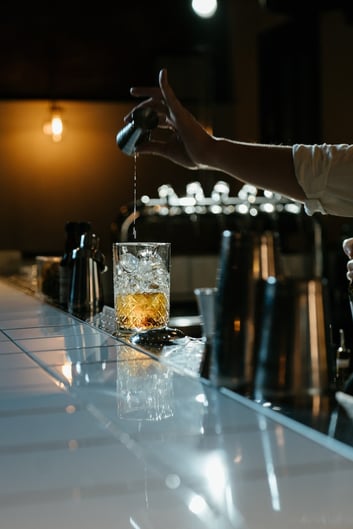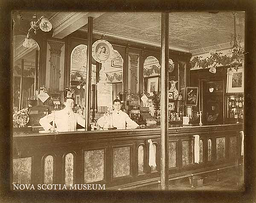In the world of bars and nightclubs, maintaining precise Liquor Control and efficient Bar Control is essential for profitability. One revolutionary tool that's transforming the way these establishments manage their operations is the Liquor Inventory App and Bar Inventory App. Let's delve into how these apps are helping bars boost their bottom lines by enhancing liquor and bar control.
Precision in Liquor Control with a Liquor Inventory App
A Liquor Inventory App offers a level of precision in liquor control that was once unimaginable. Traditional manual inventory methods are not only labor-intensive but also susceptible to human error. With a Liquor Inventory App, every drop of liquor is meticulously tracked in real-time. This means that every bottle, keg, or case of spirits is accounted for with pinpoint accuracy, greatly reducing the chances of over-pouring or theft.
Moreover, these apps provide data-driven insights into liquor consumption patterns. Bar managers can access real-time data on which spirits are in high demand and which are not. Armed with this information, they can make informed purchasing decisions, ensuring that the bar is always stocked with the right products. This optimization results in reduced wastage, more efficient storage, and, ultimately, higher profitability.
Efficiency in Bar Control with a Bar Inventory App
Efficiency is the lifeblood of a well-run bar, and a Bar Inventory App is a game-changer in this regard. It eliminates the need for manual stock counts and guesswork, allowing bar staff to focus on what they do best—serving customers. Real-time updates on inventory levels ensure that staff always know what's available, reducing the risk of running out of essential supplies during peak hours.
The efficiency extends to ordering and restocking as well. With a Bar Inventory App, managers can set up automated alerts for low stock levels, guaranteeing a steady flow of inventory without interruptions. This streamlined approach not only saves time but also minimizes the stress and potential lost revenue associated with stockouts.
The Profitable Synergy of Liquor and Bar Control
When a Liquor Inventory App and a Bar Inventory App work together, the result is a powerful synergy that enhances both liquor and bar control. Imagine having comprehensive insights into which drinks are your top sellers, allowing you to adjust pricing or promotions accordingly. With real-time data at your fingertips, you can develop pricing strategies that maximize revenue while providing value to customers.
These apps also play a crucial role in promoting accountability. By digitally tracking every transaction, from orders to sales, they deter employee theft and unauthorized consumption. This creates a more secure environment and builds trust among staff members, contributing to smoother operations.
In conclusion, the integration of a Liquor Inventory App and a Bar Inventory App is a game-changer for the bar and nightclub industry. These digital tools empower bar owners to take precise control of their liquor inventory, streamline operations, make data-driven purchasing decisions, and ultimately enhance profitability. The result is a well-organized, efficient, and secure establishment that caters to patrons' preferences while maximizing its bottom line. If you're looking to pour profits into your bar business, investing in these innovative apps is the way to go. Cheers to a more prosperous future for your establishment!
Liquor Inventory Experts
Topics: Bar inventory, Scannabar Inventory system, Bar Management, alcohol cost, Reducing Liquor Costs
 There are many people who describe themselves as bar consultants, but simply sitting at a bar and ordering a drink does not make us specialized in the field. If you are considering a bar consultant for your business, it is a good idea to understand what they can bring to your company in terms of information.
There are many people who describe themselves as bar consultants, but simply sitting at a bar and ordering a drink does not make us specialized in the field. If you are considering a bar consultant for your business, it is a good idea to understand what they can bring to your company in terms of information.
A bar consultant normally has a background in the nightclub, restaurant and hotel industry. They understand the various facets of the business from the sales, controls, marketing and human resource sides of the business. Before hiring a bar consultant, it is always a good idea to ask them where their strengths lie and of course who they have consulted for.
If you are a large nightclub with multiple pouring stations, a consultant from the hotel or restaurant field might not be suited for the job. Bar consulting must help you take decisions that will have a positive impact on your operations. There are some bar consultants that focus on controls and how to implement liquor, beer and wine inventory procedures. Others are more front of the house bar consultants and focus on service and personnel.
There are bar consultants that will help you with the image of your bar and give you marketing ideas and promotions to help increases sales. When you are in the process of hiring a bar consult, it is maybe a good idea to ask if they work alone or have a team that can cover specific or maybe all areas of the operation that need attention. In the end, proper bar consulting can bring you the added knowledge you may need to improve the overall performance and profitability of your bar.
Topics: inventory managers, Bar staff, alcohol cost, hospitality jobs
Inventory count
 An inventory count can be best described as a physical inventory of what is currently in stock in the storage areas, comparing that count to what the liquor, beer and wine inventory count software thinks is in stock, and making any necessary adjustments to get the liquor, beer and wine inventory count software to match the storage area counts.
An inventory count can be best described as a physical inventory of what is currently in stock in the storage areas, comparing that count to what the liquor, beer and wine inventory count software thinks is in stock, and making any necessary adjustments to get the liquor, beer and wine inventory count software to match the storage area counts.
Taking an inventory count on a regular basis will not only help us have a tighter control over our liquor, beer and wine inventory but also flag us of any discrepancies. Some inventory count software will also make you aware of any product that may have gone missing like a bottle of wine or liquor. Inventory counts will also help you better asses if you are potentially carry to much inventory that can expose you to shrinkage and tie up valuable cash flow.
Inventory counts can also be indicators of low stock levels that could lead to customer dissatisfaction and lost sales. It is important that inventory counts are performed on a regular basis. Precise inventory counts can you give you the valuable information you may need to make some decisions in your business that you may otherwise not have taken.
A perfect example can be volume rebate purchases; if you are inventory count show you are carrying too much of a certain product already, it may be prudent not pursuing a special deal, on the other end of the spectrum, an update inventory count may actually encourage a large volume purchase due to the product popularity and the need to replenish low stock level.
Topics: liquor inventory, Bar inventory, bar inventory levels, beer inventory, alcohol cost
The relationship between cost and price
A question we often ask ourselves and our liquor, beer and wine inventory consultants is; what should my pour cost percentage be? The answer can be quite simply calculated if we understand and adopt the proper formula.
To start, we need to establish the net cost of our product and divide this by the selling price of the item in our business. The cost percentage portion pays for the ingredients needed to make the drink and the profit percentage is the gross margin we make when a drink is sold. The cost percentage should be in line with the beverage cost percentage that has been established in our budget. Generally, liquor costs run at 20%-25%, while wine and beer can run anywhere from 32% to 50%. Please keep in mind this may not be the right cost percentages for your business. If your establishment is in a high tourism area and you can sell your drinks at a higher price, your pour cost percentage should be lower. Another factor that will have an impact is your cost of goods sold. If you purchase in higher volumes than your typical bar, hotel or restaurant, you may benefit from reduced pricing which will in turn reduce your pour cost percentage.
Here is an examples on how to make sure our selling price and cost percentages are in line with our budgeted expectations.
Selling Price: Cost divided by Cost % = sales price
1.5 oz vodka cost $0.95/15% = $6.35
When it comes to price mixed drinks, the easiest and most widely used method is using the cost of the prime ingredient. This of course is not as accurate as costing out the whole recipe, but to arrive to a sound price structure, we must look at each drink by itself to establish a cost/price relationship in line with the overall price structure of our business.
Topics: alcohol cost, pricing drinks, beer, liquor, wine


